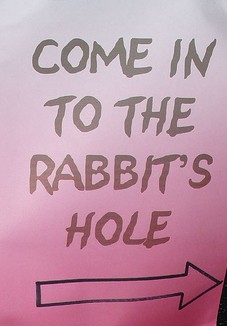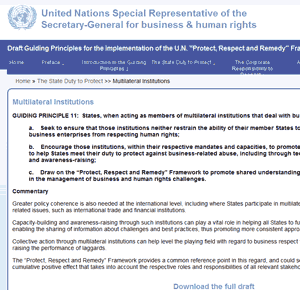 Just before Christmas the Harvard Business Review (HBR) published a quick glance at three companies which had implemented “Better Corporate Philanthropy” and highlighted why these in particular were trailblazers in a new way of doing things.
Just before Christmas the Harvard Business Review (HBR) published a quick glance at three companies which had implemented “Better Corporate Philanthropy” and highlighted why these in particular were trailblazers in a new way of doing things.
Intrigued, I wondered how well these companies had communicated their trailblazing attributes through their websites.
Nike : leveraging strategic focus
Too often companies seem to just give money to the nearest, most deserving charity. One which has always puzzled me has been a certain international airline which picked a South American tribe. Why? Well, because they’re an international company you see and this tribe is, well, overseas from corporate HQ; international, foreign.
Five years ago Nike launched The Girl Effect project which aims at introducing and improving living standards and opportunities for adolescent girls worldwide. Nike looked at their “core competencies in consumer insights and market segmentation” and this is where it led them.
Adam Day, Nike’s Senior Portfolio Manager, explains this in the HBR article: “The focus on adolescent girls is truly authentic to our fundamental belief in the power of human potential”.
And that’s the best explanation I’ve been able to find.
Undoubtedly the strategy of using something you already know about to drive your CSR efforts is darned sensible and if you think about it Nike will know a lot about adolescent girls and releasing their potential (“Just Do It”).
But nowhere is there an explanation of why girls are important to Nike from the strategic point of view, meaning many people will assume they’ve picked the issue out of a hat (well, it’s not that obvious). A shame if the HBR is right and they really are trailblazers in this regard.
Goldman Sachs: building to scale
It probably goes without saying that the larger the business you are the greater the impact you’re able to have. However not all businesses are willing to take advantage of their size, preferring instead to do a minimal amount in order to satisfy an obligation they are either irritated by or don’t fully understand
Not so Goldman Sachs, it would appear. In 2008 they shifted from the usual round of annual grants to (dare I say it?) a more sustainable model of corporate giving and CSR. This was done by committing $100m over 5 years to a single programme designed to turn promising women entrepreneurs around the world into economic powerhouses within their communities.
The programme is called “10,000 Women” and it delivers a variety of courses to these entrepreneurs from short week-long affairs to more in-depth six-month programmes.
Now $100m isn’t a particularly large amount of money (the company is throwing around over $1bn on other CSR projects). However what caught the eye of the HBR was the support structure the company had put together in order to deliver this money on the ground, including 43 universities and 30 NGOs in 20 countries.
This is a truly impressive network the company has thrown together, especially as it’s happened in less than two years and has already trained 2,000 aspiring entrepreneurs.
How would you communicate this achievement on your website? That’s a rather tricky one, but as this is a trailblazer perhaps in the company’s thought leadership section? It’s not mentioned there and (to be picky for a moment) the whole “Ideas” section of their website seems a little disorganised.
What would be really great to see is this programme published as a Case Study. It must have taken a lot of hard graft to get the network up and running, especially in such a short amount of time. I’m sure there are a good set of lessons learned and best practice tips companies of all sizes can use to improve their own CSR programmes.
Intel: measuring outcomes
It is perhaps no surprise that a technology company should be a little more obsessive about statistics than most other companies, or “rigorously numerical” as the executive director of Intel Foundation, Wendy Hawkins, would have it.
So it is that in one of Intel‘s flagship CSR programmes, Intel Teach, the company doesn’t just measure outcomes, but the outcomes of those outcomes: the true impact of their efforts.
Intel Teach is about training teachers in the US and around the world about how to use technology in the classroom. However they don’t just sling the teachers and equipment out of the door once the training has completed, they go back every year to find out how effectively the training is being implemented in the classroom and whether there are any local conditions which may be impacting its delivery.
In this way Intel is measuring not just how effectively it is delivering these professional development programmes, but also what impact those programmes are having further down the line and whether there are any further obstacles they can use the programmes to overcome within the wider society.
There is an impressive list of case studies, reports and white papers on the Intel Teach webpage, stretching back to 2003. However, the latest annual survey available appears to be from 2005, which is a little disappointing.
Top Tips
So, taking a lead from these three institutions, here are some top tips for website content you ought to include in your sustainability section:
- explain how your chosen strategy reflects your company’s core strengths and competencies and isn’t just a charity picked out of a hat
- show how your strategy uses the resources at your disposal to their very best effect and isn’t just throwing money out of a passing car
- understand and measure the true impact of your strategy, publish those results and feed them back into the strategy as appropriate
- This will help both your CSR strategy and your website to be ranked as among of the best in your industry, and perhaps even the world.
Picture Credit: Armstrong 03 courtesy of Nike.
 Elaine Cohen is a prolific CSR blogger and the chances are if you’re reading this you should already well aware of the excellent content she puts out without ever appearing to flag.
Elaine Cohen is a prolific CSR blogger and the chances are if you’re reading this you should already well aware of the excellent content she puts out without ever appearing to flag.


